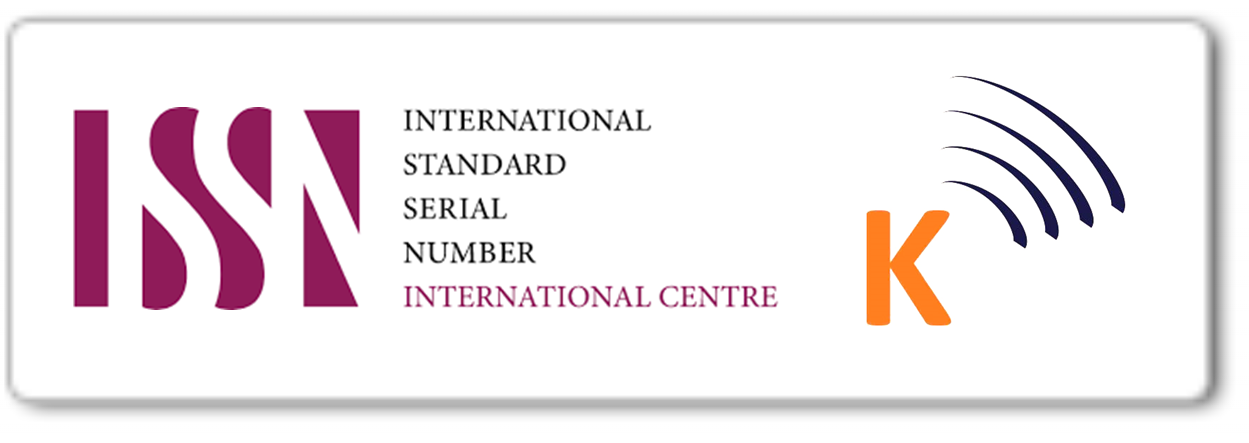STRATEGI PENERAPAN DOMAIN AFEKTIF DI LINGKUP PERGURUAN TINGGI
Keywords: affective domain, higher education, application strategies
Abstract
The application of affectiveeducation forcollegestudent cannotbe explicitlydone bylecturers or parents alone, butneeds aspecial strategyin order to havea significant impact on their character development. Based on experience in the relevant fields, the impact of affectiveeducationis oftenoverlookedby teachersand researchersbecause they thoughtthe affectivedomainis verydifficult to measureandhighlydependentonotherfactors. This paperpresents someimplementationstrategiesbased on theaffectivedomain ofliterature reviewtofind astrategy to implementthe affectivedomainforcollegestudent groups. The results ofthis studyis expected tobe afoundation forfutureempiricalresearch.
Downloads
Download data is not yet available.
References
Borbye, L. (2010). Out of the comfort zone: New ways to teach, learn and assess essential professional skill. Morgan & Claypool Publishers.
Borst, I. (2010). Understanding crowdsourcing, ERIM PhD series in research in management. Roterdam: Erasmus Universiteit Rotterdam.
Burgan, M. (2006). What ever happened to the faculty? Baltimore: John Hopkins University Press.
Innes, C.M. & Ally, M. (2004). Affective learning outcomes in workplace training: a test of synchronous vs. asynchronous online learning environments. Canadian Journal of University Continuing Education 30 (1). Spring 2004.
Johnson, D. & Johnson, R.T. (1996). Cooperation and the use of technology. Di dalam Handbook of Research for Educational Communications and Technology (ed. David H. Jonassen). New York: MacMillan Publishing.
Joyce, B., Weil, M. & Calhoun, E. (2009). Models of teaching (terjemahan: Model-model Pengajaran oleh Achmad Fawaid dan Ateilla Mirza). Ed. 8. Jakarta: Penerbit Pustaka Pelajar.
Kamradt, T. F. & Elizabeth J. & Kamradt, E.J. (1999). Structured design for attitudinal instruction dalam Instructional-design theories and models volume II (ed. Charles M. Reigeluth) p563-590. Mahwah: Lawrence Erlbaum Associates.
Krathwohl, D. E, Bloom, B.S. & Masia, B.B. (1964). Taxonomy of educational objects, the classification of educational goals. Handbook II: Affective Domain. New Jersey: Longmans.
Lickona, T. (1999). Character Education: The Cultivation of Virtue dalam Instructional-Design Theories and Models Volume II (ed. Charles M. Reigeluth) p 594-612. Mahwah: Lawrence Erlbaum Associates.
Lynch, K., Baker, J. & Lyons, M. (2009). Affective equality. Palgrave: Macmillan Publ.
Martin, B.L. & Reigeluth, C.M. (1999). Affective education and the affective domain: implications for instructional-design theories and models dalam Instructional-design theories and models volume II (ed. Charles M. Reigeluth) p485-509. Mahwah: Lawrence Erlbaum Associates.
Mc Cown, K. S. & Mc Cormick, A. H. (1999). Self-science: Emotional intelligence for children dalam Instructional-design theories and models Volume II (ed. Charles M. Reigeluth) p 537-561. Mahwah: Lawrence Erlbaum Associates.
McGlone, J. (2011). Adult learning styles and on-line educational preference. Research in higher education journal 12, 1-9.
Moore, J. (1999). Adolescent spiritual development: Stages and strategies dalam Instructional-design theories and models volume II (ed. Charles M. Reigeluth) p.613-629. Mahwah: Lawrence Erlbaum Associates.
Slavin, R. E (2006). Educational psychology (8th ed). Boston: Pearson Publ.
Borst, I. (2010). Understanding crowdsourcing, ERIM PhD series in research in management. Roterdam: Erasmus Universiteit Rotterdam.
Burgan, M. (2006). What ever happened to the faculty? Baltimore: John Hopkins University Press.
Innes, C.M. & Ally, M. (2004). Affective learning outcomes in workplace training: a test of synchronous vs. asynchronous online learning environments. Canadian Journal of University Continuing Education 30 (1). Spring 2004.
Johnson, D. & Johnson, R.T. (1996). Cooperation and the use of technology. Di dalam Handbook of Research for Educational Communications and Technology (ed. David H. Jonassen). New York: MacMillan Publishing.
Joyce, B., Weil, M. & Calhoun, E. (2009). Models of teaching (terjemahan: Model-model Pengajaran oleh Achmad Fawaid dan Ateilla Mirza). Ed. 8. Jakarta: Penerbit Pustaka Pelajar.
Kamradt, T. F. & Elizabeth J. & Kamradt, E.J. (1999). Structured design for attitudinal instruction dalam Instructional-design theories and models volume II (ed. Charles M. Reigeluth) p563-590. Mahwah: Lawrence Erlbaum Associates.
Krathwohl, D. E, Bloom, B.S. & Masia, B.B. (1964). Taxonomy of educational objects, the classification of educational goals. Handbook II: Affective Domain. New Jersey: Longmans.
Lickona, T. (1999). Character Education: The Cultivation of Virtue dalam Instructional-Design Theories and Models Volume II (ed. Charles M. Reigeluth) p 594-612. Mahwah: Lawrence Erlbaum Associates.
Lynch, K., Baker, J. & Lyons, M. (2009). Affective equality. Palgrave: Macmillan Publ.
Martin, B.L. & Reigeluth, C.M. (1999). Affective education and the affective domain: implications for instructional-design theories and models dalam Instructional-design theories and models volume II (ed. Charles M. Reigeluth) p485-509. Mahwah: Lawrence Erlbaum Associates.
Mc Cown, K. S. & Mc Cormick, A. H. (1999). Self-science: Emotional intelligence for children dalam Instructional-design theories and models Volume II (ed. Charles M. Reigeluth) p 537-561. Mahwah: Lawrence Erlbaum Associates.
McGlone, J. (2011). Adult learning styles and on-line educational preference. Research in higher education journal 12, 1-9.
Moore, J. (1999). Adolescent spiritual development: Stages and strategies dalam Instructional-design theories and models volume II (ed. Charles M. Reigeluth) p.613-629. Mahwah: Lawrence Erlbaum Associates.
Slavin, R. E (2006). Educational psychology (8th ed). Boston: Pearson Publ.
Published
Aug 30, 2011
DOI:
How to Cite
Soetam Rizky Wicaksono. (2011). STRATEGI PENERAPAN DOMAIN AFEKTIF DI LINGKUP PERGURUAN TINGGI. Jurnal Pendidikan, 12(2), 112–119. https://doi.org/10.33830/jp.v12i2.503.2011
Download Citation
Issue
Section
Articles
License & Copyright Holder







